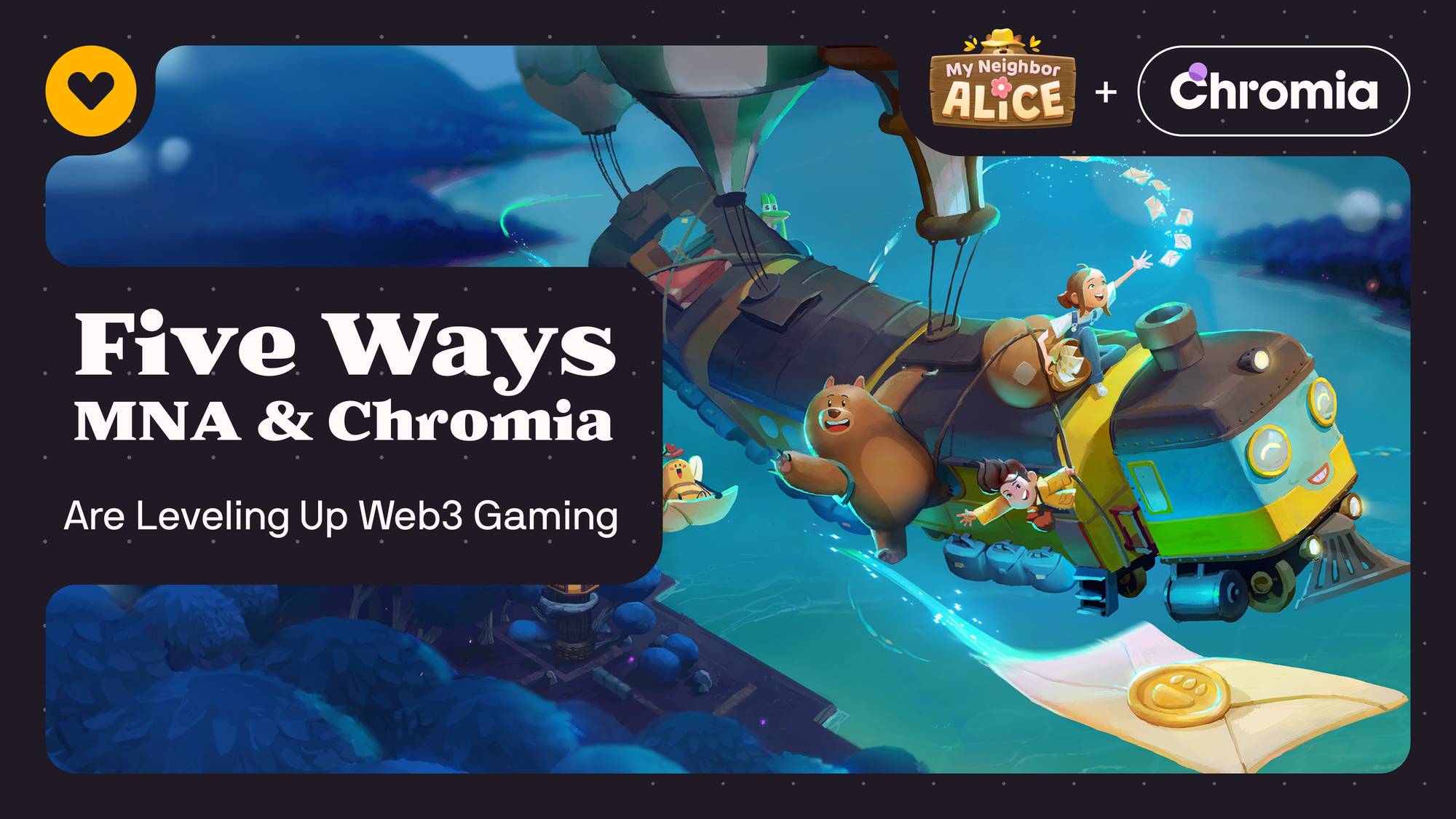My Neighbor Alice is gaining traction in the blockchain gaming space. The launch of the game, a high-profile partnership with Pudgy Penguins, and an appearance at the Ethereum Community Conference (EthCC) in Cannes are helping the project reach new audiences and expand its community.
The launch of Chapter One: A New Adventure marks an important milestone for the project and Web3 gaming at large. Built on Chromia’s relational blockchain infrastructure, My Neighbor Alice is doing more than just integrating crypto assets into a game, it’s redefining how blockchain games are designed.
Here are five ways MNA and Chromia are setting a new standard:
1. Play Instantly, No Wallet Required
Gone are the days of needing to download a massive game client or configure a wallet just to try out a Web3 game. With the introduction of WebGPU rendering, My Neighbor Alice now runs directly in your browser. Just click play and start exploring.
Thanks to Guest Mode, players no longer need to connect a wallet or own land to start playing. When they’re ready to mint assets or save progress, they can create a wallet directly within the game. They can do this through a Web3 wallet like MetaMask or by using familiar social logins such as Gmail or Facebook.
With the social login option, creating a wallet takes just a few clicks, with no need to memorize seed phrases. At the same time, crypto-native users can take the traditional route by managing private keys and connecting the Web3 wallet of their choice. This flexible approach blends the convenience of traditional gaming with the benefits of blockchain ownership.
2. Zero Gas Fees, Powered by Chromia’s Economic Model
Chromia was designed to give developers more flexibility than traditional blockchains. A key part of this design is its hosting model, which allows each dapp to pay for its own network usage and define its own fee policies.
My Neighbor Alice takes advantage of Chromia’s hosting model by covering network costs on behalf of players, allowing them to interact with the game without paying gas fees. Instead of charging users for each transaction, the game recoups these costs through specific in-game activities such as trading, crafting, and marketplace interactions. This model decouples gas fees from individual actions, to deliver a more intuitive and player-friendly economic system.
3. A Fully On-Chain World with Relational Blockchain
This is where Chromia’s tech really shines. While most blockchain games still rely heavily on centralized infrastructure for core game functions, My Neighbor Alice takes a different path.
Built on Chromia’s relational blockchain architecture, the game can efficiently structure, sort, and query complex data. This makes it possible to record far more than just item ownership. Player progress, game logic, and the global state of the world are all stored directly on-chain. Nearly the entire experience is decentralized and persistent. This gives players true control, transparency, and ownership and sets a new benchmark for Web3 gaming.
To support this, the MNA team implemented a dual-chain setup: one chain handles core game functions, while a secondary chain acts like an air traffic controller, coordinating and maintaining a synchronized view of the entire game world.
As the game continues to grow, the team plans to further leverage Chromia’s multi-chain architecture to maximize scalability. This includes deploying additional chains (as many as one per in-game island) to support a larger player base and richer gameplay environments.
4. ALICE Joins Chromia Mainnet via Token Chain
In Chromia’s modular, multi-chain architecture, managing assets across different dapps can become complicated. Token Chain solves this by acting as a central hub for asset movement. Instead of requiring each application to build custom connections, the Token Chain provides a unified system that simplifies transfers and reduces development complexity.
ALICE, the native token of My Neighbor Alice, was recently added to the Token Chain, becoming the first third-party token integrated through the system. This allows ALICE to move more easily across the Chromia ecosystem, enabling seamless use across multiple dapps and services. It also lays the groundwork for expanded utility within Chromia’s growing suite of DeFi protocols.
Read more about Token Chain here.
5. Multi-Faceted Approach to NFTs
MNA is an early adopter of the upcoming CRC2 NFT protocol, which is compatible with ERC-721 and ERC-1155. Throughout the development of My Neighbor Alice, many game assets such as land plots, animals, and items were originally created on BNB Chain. Using an internal bridge these assets can be ported into the game world. After the public release of the EVM to CRC2 bridge, MNA will be one of the first projects to implement it.
Chromia EIF also supports a second approach that doesn’t require bridging. Users can link their Chromia accounts to EVM wallets, allowing the system to read ownership data from other networks. Dapps can then take action based on that data, functioning as an extension layer. This method powers the collaboration with Pudgy Penguins. NFT holders can link their wallets, and the game detects ownership to unlock exclusive in-game content.
The Future is Now
From seamless onboarding to truly on-chain worlds, My Neighbor Alice is pushing Web3 gaming beyond its current limitations. Backed by Chromia’s powerful infrastructure, it's delivering an experience that’s fun, immersive, and truly decentralized.
As more features roll out and integrations deepen, the collaboration between MNA and Chromia continues to lead the way toward a more playable, open, and player-owned future in gaming.
About Chromia
Chromia is a Layer-1 relational blockchain platform that uses a modular framework to empower users and developers with dedicated dapp chains, customizable fee structures, and enhanced digital assets. By fundamentally changing how information is structured on the blockchain, Chromia provides natively queryable data indexed in real-time, challenging the status quo to deliver innovations that will streamline the end-user experience and facilitate new Web3 business models.
Website | X | Telegram | Instagram | Youtube | Discord | Reddit | LinkedIn | Facebook |
